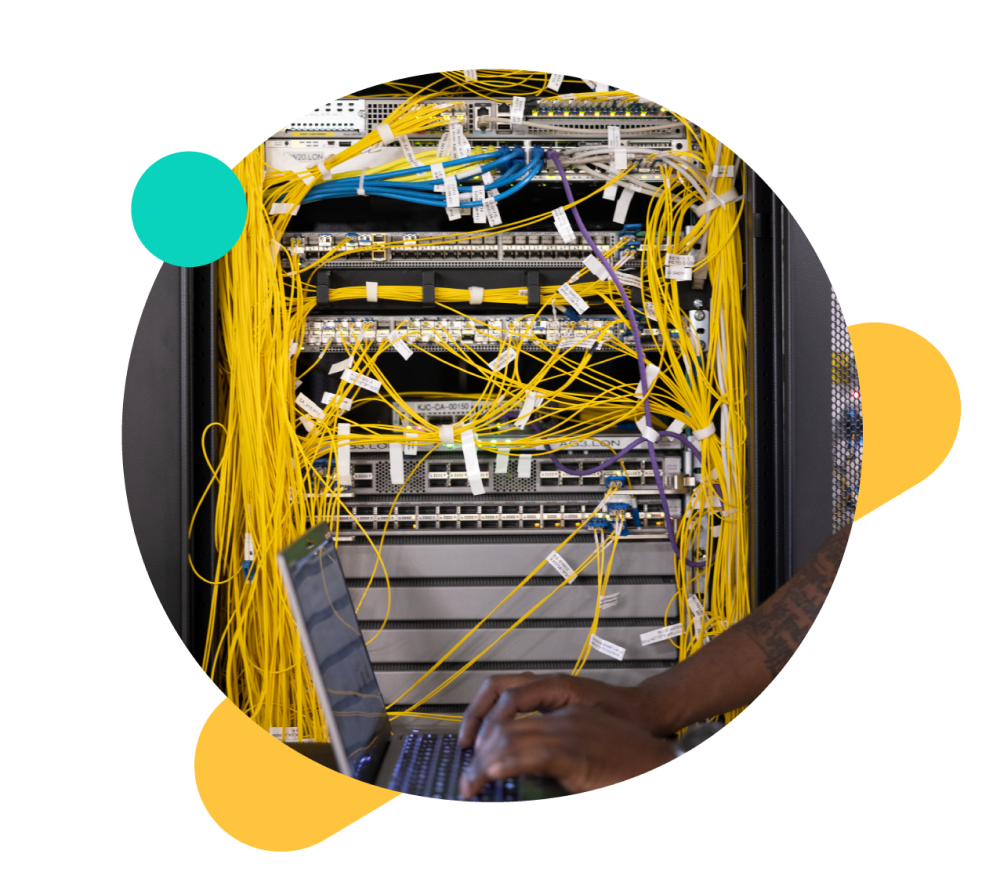What is digital infrastructure?
Digital infrastructure is the foundation of any connected business. It enables success, powers transformation and connects people around the world.
It includes connectivity, cloud, compute, security, storage, SaaS and PaaS applications and much more. It brings together and interconnects both physical and virtual technologies, and 'Everything as a Service' (XaaS) platforms are building the foundations of modern digital operations.
The growth in digital infrastructure is driven by cloud migration, the hybrid workplace, the automation of almost everything and the need to enable flexibility of service and capability on a global scale.
What does it enable for businesses?
Digital infrastructure enables the connected business to operate, grow, innovate and respond to customer demand. At a basic level, it’s the platform that connects them to customers and the outside world and, if done well, it is a significant opportunity for competitive differentiation.

What is Colt's role in digital infrastructure?
Our vision is to be the digital infrastructure company that the world’s leading businesses choose to connect with. We understand the importance of connectivity and the impact it has on the overall user and customer experience. Without connectivity, there is no digital infrastructure.
How does digital infrastructure relate to digital transformation?
Digital transformation cannot happen without digital infrastructure, as this is the basis for any connected technology. Previously businesses may have viewed things like cloud, storage and connectivity as separate items rather than as a whole. Taking a digital infrastructure view is a much more holistic approach and takes a view of infrastructure as a single entity. This means that things like agility, security and experience must be considered across the whole business, not just on a supplier-by-supplier basis.

Enabling new business models
Effective digital infrastructure can enable businesses to leverage new business models and value-added chains. It contributes to the increased collaboration and communication between different apps of different countries.

Fostering innovation & efficiency
Digital transformation emerges as the catalyst, propelling innovation and efficiency, while infrastructure forms the bedrock for the seamless delivery of services. New advancements require growth in infrastructure, and vice versa.

Improving economies of scale
Private sector-driven development raises expectations across all markets over time, with future innovations gradually becoming standardised customer expectations for experiences and quality of service.
What does good digital infrastructure look like?
Pre-digitalisation, changing or updating infrastructure was a slow and expensive process which involved installing hardware at physical sites. Then, if you wanted to change one component, it meant adapting other components that other partners managed, and the burden of orchestration fell to the internal team.
It was an inflexible approach that was hard to adapt, and there was a real risk that the business’s needs would have outgrown the planned infrastructure by the time it was ready to go live.
In contrast, the speed, flexibility and responsiveness of digital infrastructure stands out. An enterprise can identify a need and respond in near real-time, using automated orchestration and software defined networking to stand up seamlessly integrated capabilities in a matter of clicks. Today’s digital infrastructure is agile, scalable and cost-effective – and the control lies with the business rather than the infrastructure being a business inhibitor.
What business doesn’t want an on-demand ‘cloud like’ infrastructure experience at its fingertips?
Large businesses require digital infrastructure that is not only reliable but also scalable to accommodate growth and expansion. The infrastructure should be modern and capable of adapting to future technological advancements. This includes being ready for trends like the shift to the edge, developer-led and software-defined infrastructure.
Robust digital infrastructure should support rapid innovation of new digital products and business models, enabling data-driven decisions and superior customer experiences, with the intention of fostering a culture of digital innovation, agility and collaboration.
For large businesses, digital infrastructure should enable seamless communication and data exchange across different regions, breaking down data and application silos, and enable integration via APIs.

Stay secure beyond borders
A guide to SASE implementation
With employees working remotely and critical systems moving to the cloud, traditional network perimeters have exploded and businesses need to stay secure beyond borders to enable success. Download the free guide to discover a guide to SASE implementation, to help you find the right pathway for your business.
Why is connectivity so critical?
The right connectivity can make or break your digital infrastructure – it needs to enable the flexibility and agility your business requires, with security built in to meet user demand. The network needs to be planned from day one to ensure the best experience for users and end customers.
What’s the future of digital infrastructure?
Digital infrastructure is continually evolving, driven by enterprise and end-user demand. The introduction of automation through APIs, AI-based intelligence and predictive fault monitoring, will help ensure that services remain live and problems are spotted well in advance.
There’s also scope for greater analysis, with heavy lifting taken care of by AI and machine learning, to provide greater insight into how people use their networks. This will also be used alongside the greater agility offered by automation to better manage resources and budgets.

Stay secure beyond borders
A guide to SASE implementation
With employees working remotely and critical systems moving to the cloud, traditional network perimeters have exploded and businesses need to stay secure beyond borders to enable success. Download the free guide to discover a guide to SASE implementation, to help you find the right pathway for your business.
Ready to get started?
Related content
What is Unified Communications (UC)?
Unified Communications describes the integration of multiple communication methods (such as Email, Phone, Video and Messaging) within a business.
Read MoreUnderstanding SASE: A comprehensive overview for modern network security
Secure Access Service Edge, better known as SASE is a recently emerging term, coined originally by Gartner in 2019. SASE is the convergence of modern WAN services and network security services into a single cloud based service model.
Read MoreWhat is IP transit?
What is IP Transit? IP Transit, or Internet Transit, is a networking service offered by Internet Service Providers (ISPs) that allows networks to connect to…
Read MoreThe ultimate guide to SD-WAN
| 15 min read What is SD-WAN? SD-WAN is a networking technology that enables you to manage & optimise the connectivity of multiple sites across…
Read More






